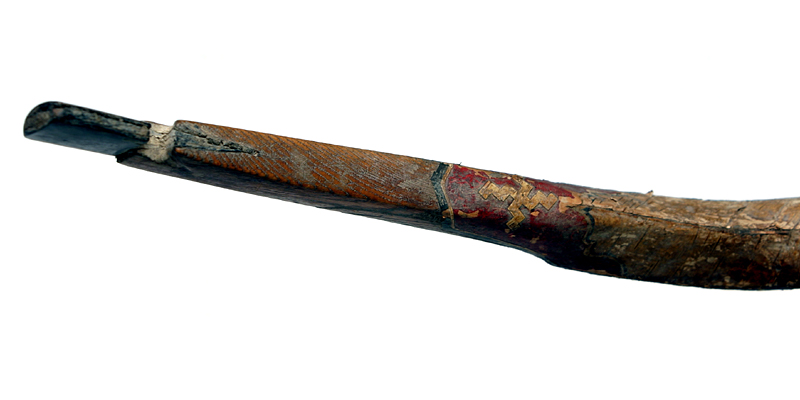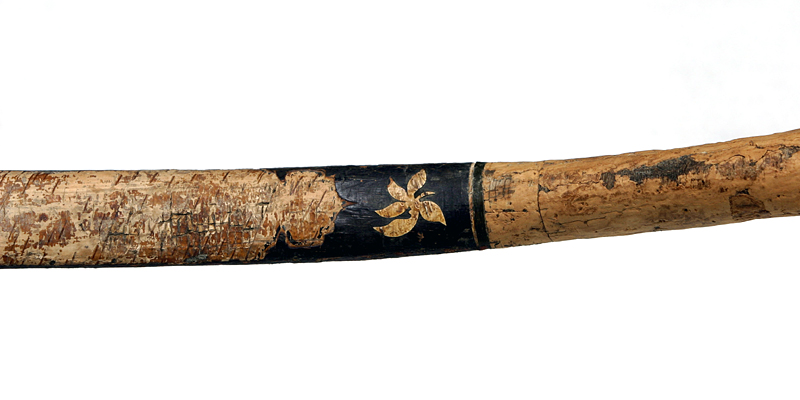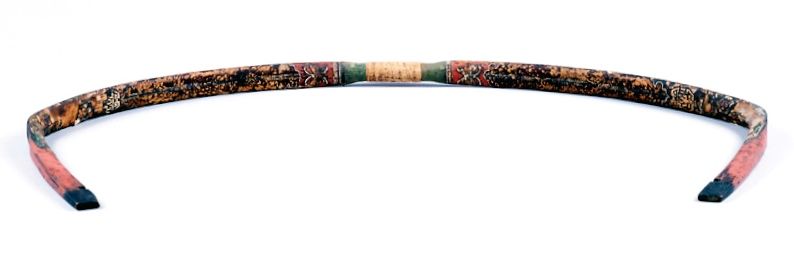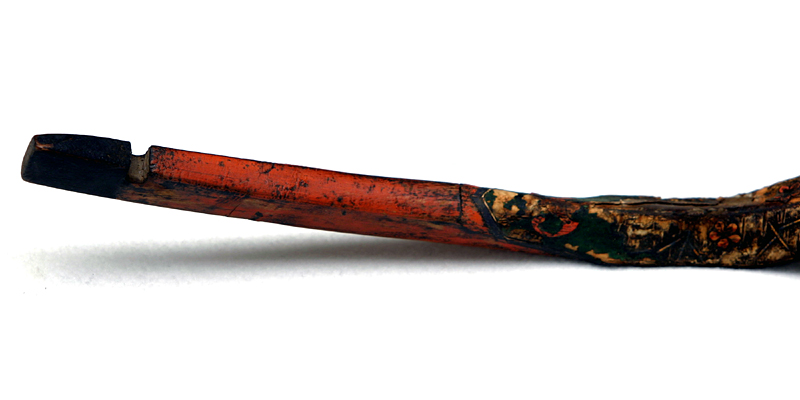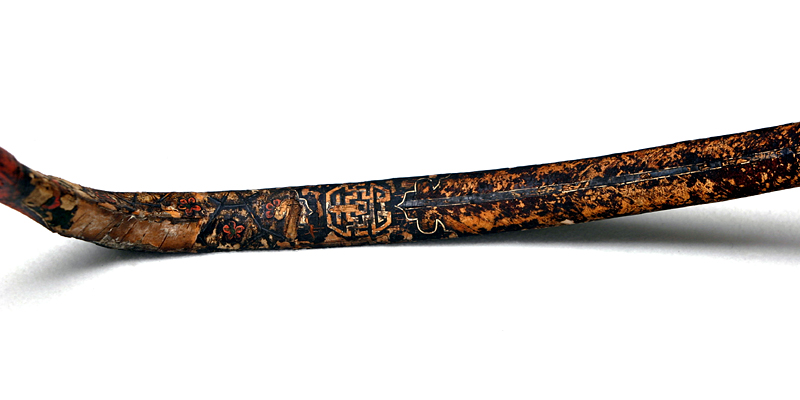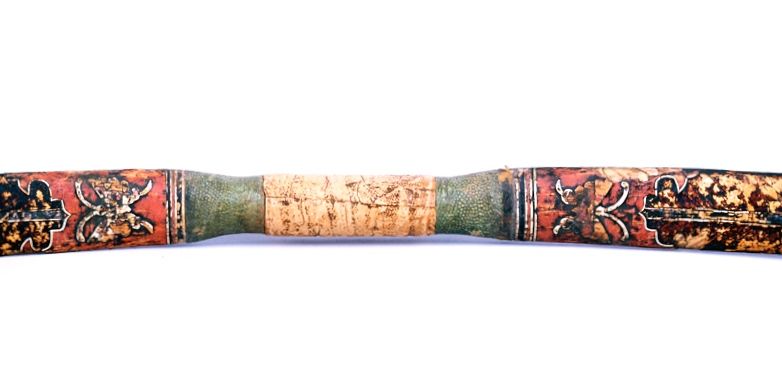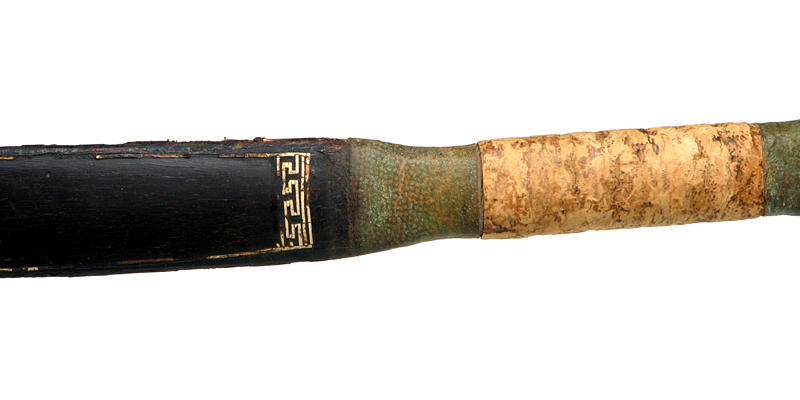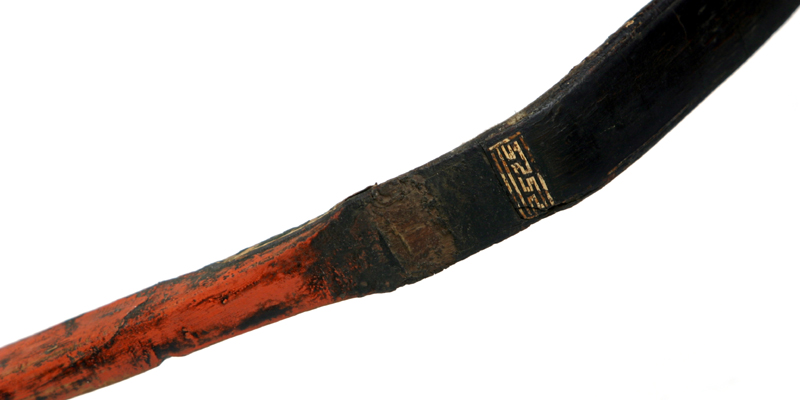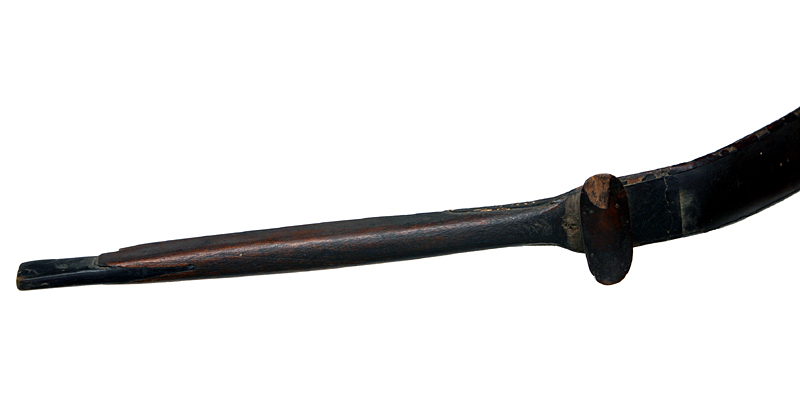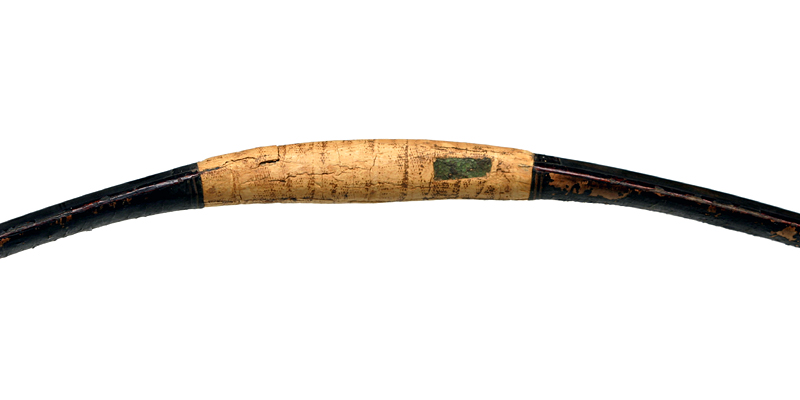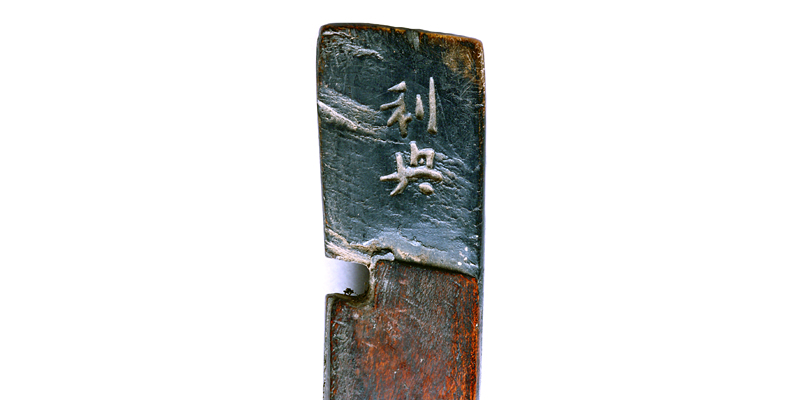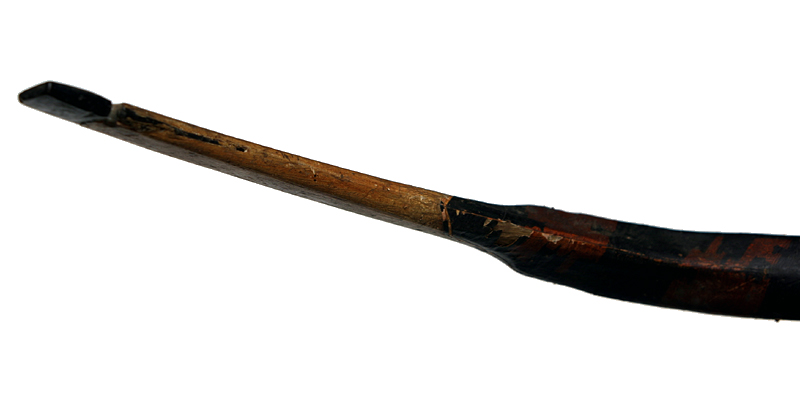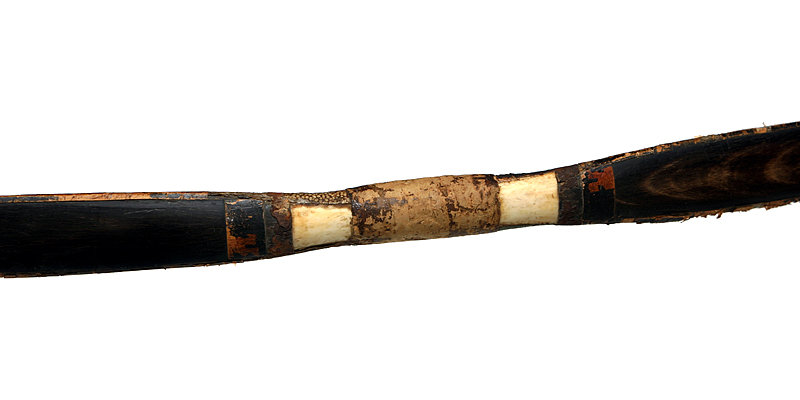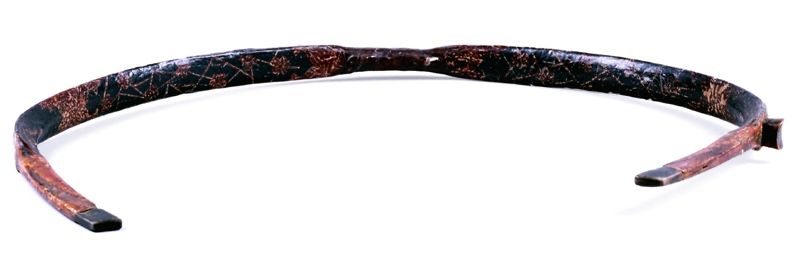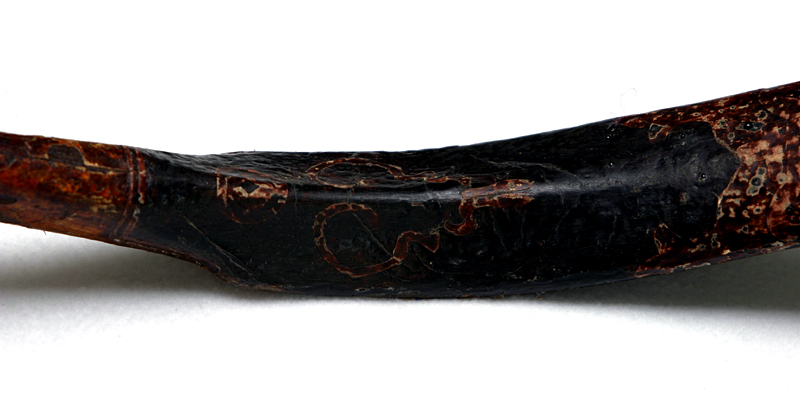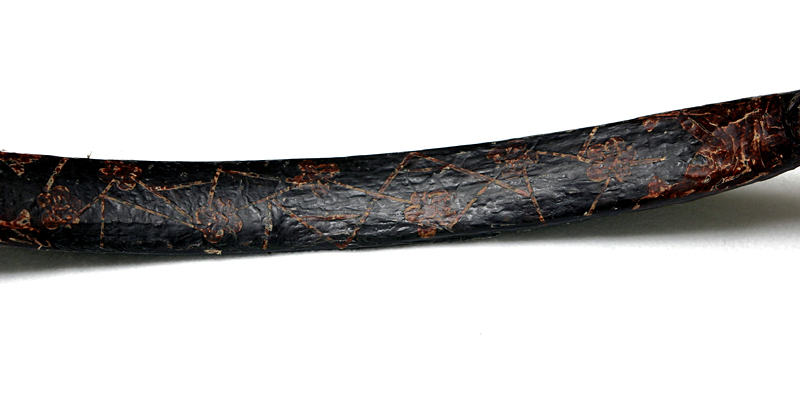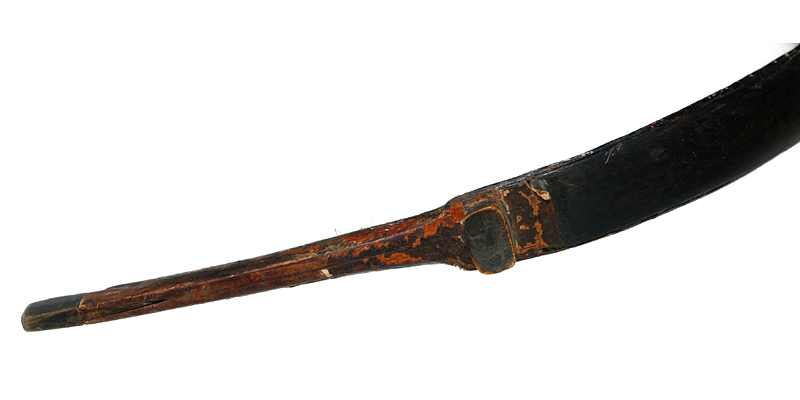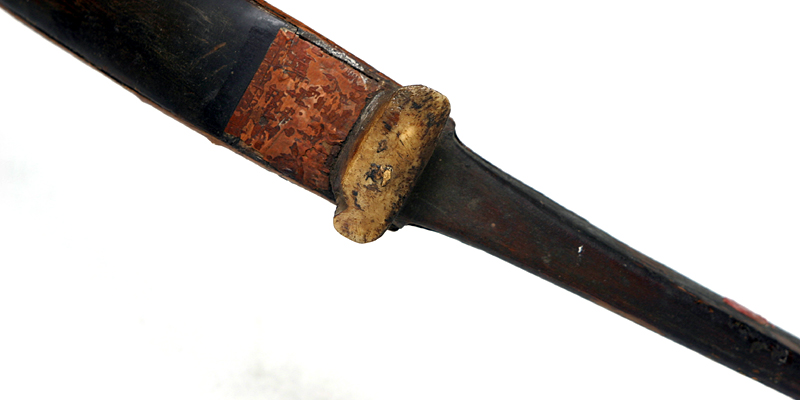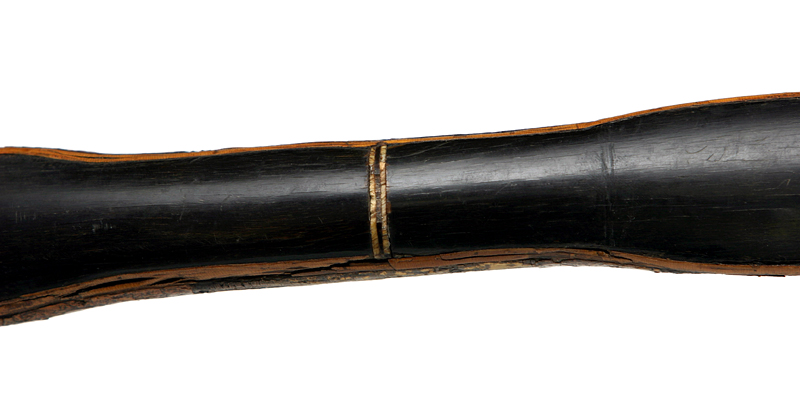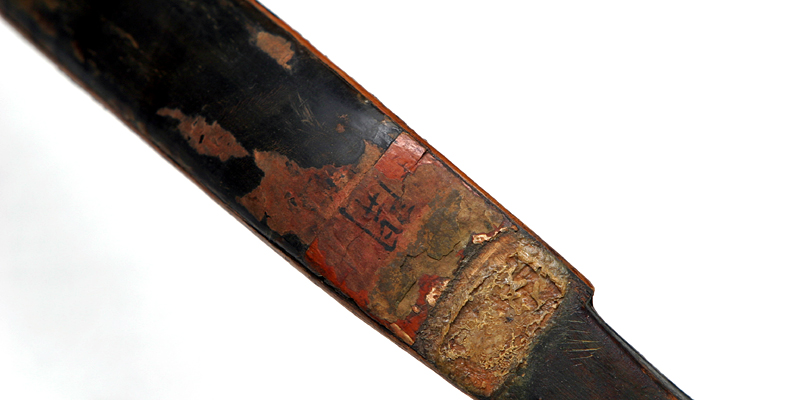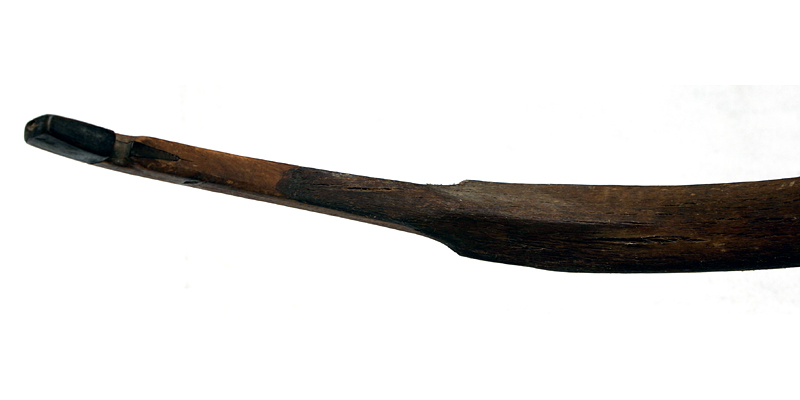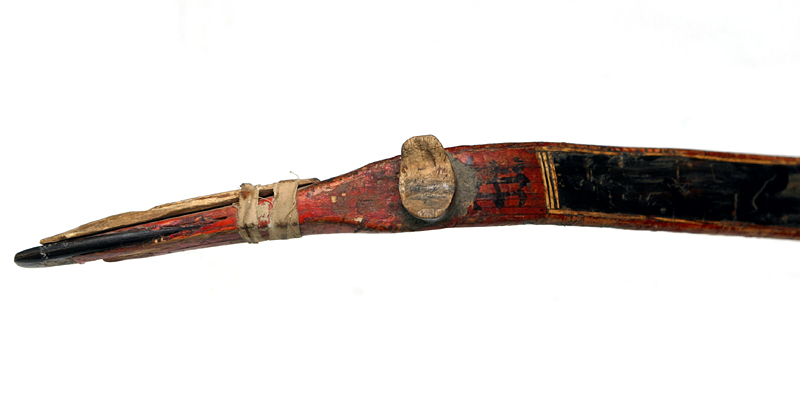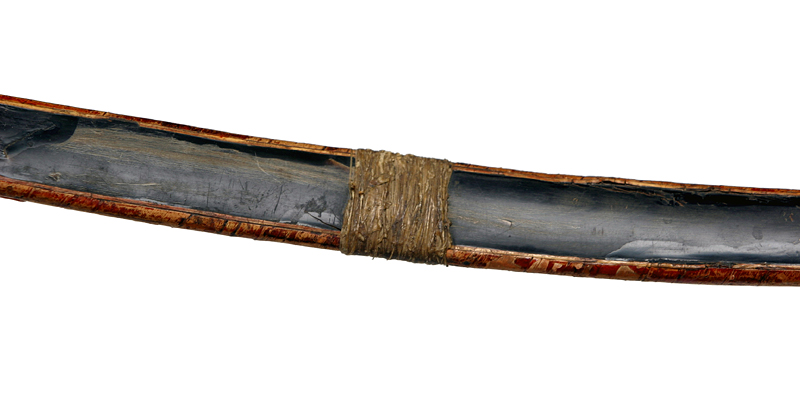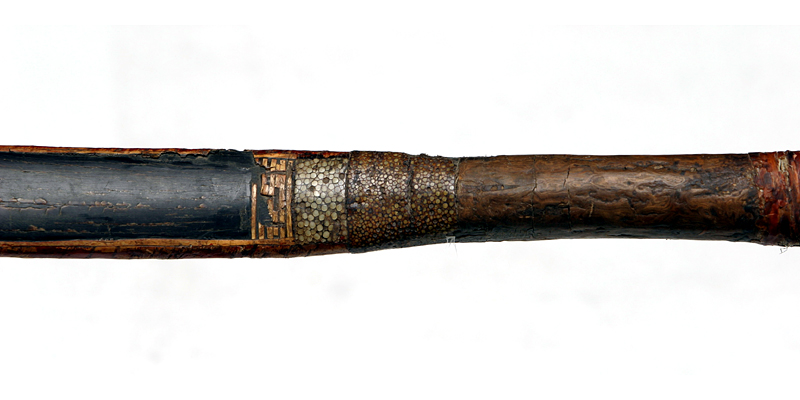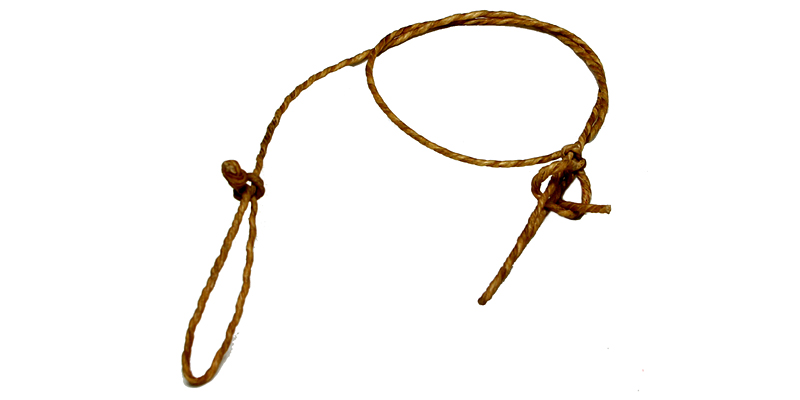By Peter Dekker, April 4, 2014
Young-Yip Bows & Arrows Museum
This museum in South-Korea is owned by Yoo Young Ki, a famous Korean bow- and arrow maker whose skills were deemed so valuable he is a designated intangible cultural asset. I've seen him at work in South-Korea, it was most impressive to see a living exponent of the Korean arrow making tradition at work. It gave valuable insight in things we see in Qing art and literature, for example spinning the shafts to check for straightness. Composite bows are hard to do justice on camera but the photography of the bows in this museum is excellent, and an inspiration for me. I only list the Qing dynasty bows on this page. For more information and other artifacts, go to the museum website.
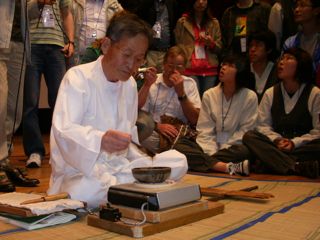
Master Yoo Young Ki at work at the World Traditional Archery Festival
in Cheonan, South Korea, 2007.
The museum's collection of Manchu bows is characterized by a number of bows with interesting features.
A large Manchu bow, 190,4 cm measured from tip to tip. With typical decoration of the later period involving patches of bark over the natural birch bark with auspicious designs on them. This example has stylized 壽 longevity symbols and other good luck symbols like the swastika, all rather well executed.
A small Manchu bow, with 156 cm measured from tip to tip. Described as a cavalry Manchu bow by the museum, I think considering it's very small size it is more likely to be a bow used by a juvenile archer. Manchus typically started at age 5, so we can expect miniature bows to turn up. It has ray skin at either side of the handle. It is decorated with various auspicious symbols.
A Manchu bow, 175 cm measured from tip to tip. It is said to date from around 1890. One of the ears bears a mark with the characters 利央, which is probably a maker's mark. Maker's marks were something only seen on later bows, but the handle follows a much earlier design. It is covered entirely in cork with only a small piece of ray skin where the arrow passes. This is standard on bows of the 18th century but rarely seen on bows of the 19th century.
A Manchu bow, 180 cm from tip to tip. It is decorated with a black repetitive pattern painted on the birch bark. Such black patterns were common on Manchu bows from the earliest known types up to the end of the dynasty. The pattern on this bow is interesting in that it is more commonly seen in the West of China, on the smaller bows of Qinghai. Between the horn slabs on the handle is a bone plate to handle the compression. Some other bows have pieces of horn in between for the same purpose. Such bone plates are a common feature on Manchu bows, but are usually hidden under materials covering the handle, and are rarely exposed as they are on this example.
A Manchu bow, 180 cm from tip to tip. It has a deep curve and has outer limbs decorated with a "cracked ice" design with plum blossoms, made out of what seems to be black painted paper. It has remains of birch bark on the ears, something that became less common on bows in the 19th century.
A Manchu bow, 187 cm from tip to tip. This bow was a gift to the museum from Lee Jae. It is a rather straight design, which makes stringing it considerably easier than the more curled up Manchu bows. The downside is that it makes for a slightly lower initial string tension, and thus lower stored energy. A most interesting feature of this bow is how the horn is exposed at the handle en joins here much like the horn joins at the handle of Ottoman bows: Pieces of bone are set in-between to close the small gap that occurs when the limbs curl inwards as the sinew is drying. This is the only Manchu bow I've seen to date with this feature.
A Manchu bow, 183,5 cm from tip to tip. It has limbs that have not been covered with bark. I have owned another example with the same, exposed outer limbs, but it did have the wear and tear you'd expect a shooting bow to have. It seems not all were finished, but some just shot like this. Despite the lack of decoration, the bow is rather well-made.
A Tibetan / Qinghai type bow, 148.5cm measured in strung state. These bows are often mistaken for Manchu bows but when compared side-by-side, the Qinghai bow is a lot smaller. The ears are also shorter in relation to the rest of the bow, distinguishing them from smaller sized Manchu bows made for juveniles. Quite a few bow-makers today sell "Manchu bows" that are in fact more closely based on these bows that are were common in Qinghai and Tibet. Some of them are still shot today, especially in Qinghai. Advantages of the Qinghai bow in relationship to the Manchu is that because of the short ears, they are less demanding in terms of straightness of build and maintenance. At the lower weights, they shoot arrows faster than a Manchu bow of the same draw weight could, making them ideal for smaller game hunt and sports, which is what they were mostly used for. They do not store enough energy to shoot the larger Manchu arrows effectively.


